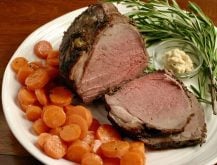DES MOINES, Iowa – Consider the pig. For centuries, that is what the world’s coin-making countries have been doing.
And unlike the cartoonish and childish pigs that litter Disney Corp. and populate the electronic presentations of pork industry promoters, pigs on coins tend more to the noble, admirable, even heroic.
Whether it’s the seriousness of the task of stamping an image on a piece of refined metal, or because of pork’s importance as the main meat source in many nations, one thing is certain: coin producers have found a ready market in hog farmers.
Read Also

Intergenerational rollover rules can help succession plans
One of the most significant concerns in succession planning for farmers is the tax bill that can come with passing the farm to the next generation.
“I sold all that I had,” said Florida collectibles dealer Ruth Abramson, who went to the World Pork Expo in Des Moines, Iowa, with a big load of farm toys and other farm-themed items. Her specially gathered hoard of coins from around the world with pig images was snapped up by hog farmers, leaving her with only the most expensive and rare ones.
“They disappeared pretty fast,” she said.
Abramson, a retired high school history teacher, doesn’t know the date or place of the world’s first pig coin. But for English-speaking North America, it goes back to the beginning. The first coin issued by an English colony in North America had a pig as its main image, she said.
This 1617 coin saluted the island’s feral pigs for providing sustenance to a group of shipwrecked English colonists, who benefited from a misfortune that befell earlier Spanish rivals.
A Spanish ship had left Central America in the 1500s en route to its homeland when a storm wrecked it. None of the people on board survived, but their hardy pigs not only made it to shore, but thrived on the island, multiplying in the Bermudan wilds.
Agricultural themes have appeared on coins at various times, but there was a great flourishing in the 20th century under communist regimes.
“Think about the hammer and sickle,” Abramson said. The art of the Soviet Union often celebrated the hardy farm worker and monumental sculptures and murals of farm scenes were common across communist nations.
Although these simplistic agricultural images were derided by authorities in the Western world as “tractor art,” they stayed popular with communist leaders right until the fall of the Berlin wall.
Abramson’s favourite is a Yugoslavian set that features one coin with a woman using a sickle representing agriculture, a man using a hammer representing industry and the two combined on a third coin showing the common interests of the labouring masses.
Abramson is sad that one of the effects of the new European currency has been to eliminate some of the small national currencies that used to extol the virtues of agriculture through their coins.
Ireland, in particular, had a number of agricultural images, including one of a bull, but “now they’ve gone to the Euro we’ve lost that too.”
Abramson, who travels to a number of farm shows every year, said she wasn’t surprised to see the pig coins get snapped up fast.
“Here I knew the pigs would be popular,” said Abramson.
“That was obvious.”















